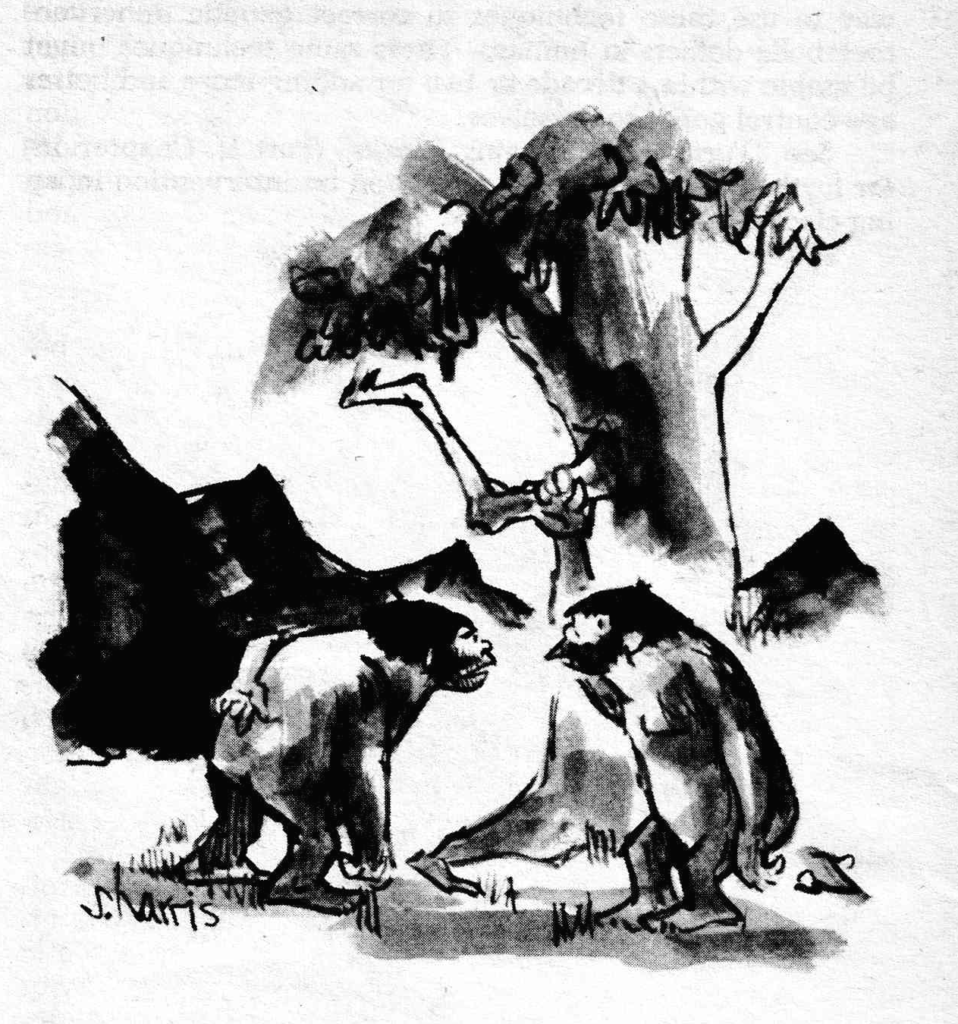In human females, menopause occurs after a period of steadily increasing probability of defective reproduction (the chances of a woman bearing a Down’s Syndrome baby, for example, increases sharply after age thirty-five). The shutdown of reproduction in humans does not mean the end of life, however. Evolutionary factors which may have resulted in this extended life span include the long dependency period of human children and the survival value to human groups of at least a few older experienced persons.
A small number of genes may be responsible for the evolution of our increased life span. The genetic differences between man and chimpanzee, according to Dr. Richard Cutler, is only about 1 percent. Yet people live twice as long as chimps. This large life span difference is thought to have
evolved in a relatively short period, only in the last few million years or so. Cutler calculated that an average increase in the maximum life span potential (MLS) of approximately two- fold occurred during the past 3 million years or so along the human evolutionary pathway (people live twice as long as the longest-lived other primates). Between 100,000 and 200,000
- years ago, the aging rate was decreasing by about 12.5 per-
cent and MLS increasing on the average by about ten years.
(The MLS was predicted by using Sacher’s formulation
wherein maximum life span is correlated with brain weight
and body weight. This formula gives an MLS for all living animal species accurate to about 25 percent.)
From known average rates of change in genetic and amino acid sequences over time, Cutler calculates that this increase in longevity has occurred with relatively few genetic changes. He concludes that both intelligence and longevity may be controlled by a few genes. As Cutler suggests, “An interesting prediction of these results is that the mutation rate, acting as a primary aging process, may have actually decreased during the evolution of the primates.” Such a decrease could be due to the evolution of more effective DNA repair mechanisms. It is definitely true that longer-lived species have better DNA-repair mechanisms than shorter-lived species—it is perhaps ironic that this success should slow further natural evolution of human beings.

The evolutionary reason we live as long as we do now (up to 110 years or so) may very well be that there are no genetic pressures (no reproductive advantage to genes) to increase that life span. However, this limit can be overcome by learning which genes control for life span and how to intervene in this control system. The complete sequencing of has been achieved, thus opening the door to research dealing with the direct manipulation of basic genetic clocks to increase life span.
Genetic engineering has already given laboratory mice a functioning gene which they were not born with. This work was performed on adult mice at UCLA by Dr. Martin J. Cline and his co-workers. Preliminary studies are already under way to use these techniques to correct genetic (inherited)
metabolic defects in humans. These same techniques might be usable within a decade or two for adding more and better age-control genes to ourselves.
Are you interested in life extension products?
mod4all ships all major brands of Modafinil from the UK
All products shipped from the UK by tracked post. We guarantee delivery.
We guarantee delivery, free reshipping.
Any questions at all about payments, shipping, etc. Anything at all, just email us.

Comments (0)